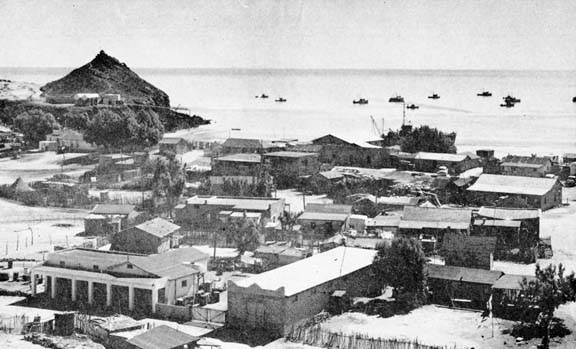
Totoaba San Felipe Milk Run
![]()
|
San Felipe in 1951, about nine years after Chuck McReynolds’ first trip there. |
WWII ERA AMERICAN COMMERCIAL TOTOABA ANGLERS CARRIED
MILK TO U.S. ARMY BASE AT SAN FELIPE
By Gene Kira, May 24, 2004, as orginally published in Western Outdoor News:
In this second of three columns, Chuck McReynolds of Pasadena describes his first trip from San Bernardino, Calif., to San Felipe, Baja California, Mexico, in 1942, during which he helped his father deliver dairy products to the U.S. Army radar base that had been established near the town’s early ice plant.
This trip was a precursor to another in 1945 during which McReynolds helped his father and friends catch totoaba commercially and sell them in the U.S.
|
|
McReynold’s experience is of particular interest because he made his first trip to San Felipe in 1942, the precise year when the totoaba harvest reached its all-time historic peak, according to U.S. government statistics.
The first recorded totoaba--two fish--were imported into the U.S. in 1923. The following year, 170,000 pounds were imported, and the peak came in 1942 with 4.9 million pounds. After that, the catch declined quickly.
In the 1960s, a very hot sport fishery for totoaba began to develop at San Felipe, but it soon disappeared as the fish were wiped out. The coup de grace came with the introduction of dynamite and gill nets. The nearly extinct fish was finally protected in the 1970s.
Here then, is Chuck McReynold’s rare personal account of driving from San Bernardino to San Felipe in 1942, just after the completion of the paved “radar road”:
“MILK RUN” (LITERALLY)
“The first trip I made to San Felipe in Mexico was to deliver dairy products to the Army radar station in the spring of 1942.
“Sometime, in about April I think, my dad pulled me out of the second grade, and we got into a 1938 Dodge truck and headed for San Felipe.
“The truck was filled with milk, butter, eggs, cheese and ice cream and we were headed for the army ‘base’ at San Felipe.
|
|
“Because of the war, there was a 35 m.p.h. speed limit, and we spent the night at Calexico, at the Anza Hotel, I think.
“We got up early the next morning. I don't remember having to stop going in either direction at the border. We crossed at Calexico and it was marked as the border, but I don't think there was any official border activity.
“We were not far out of town, across the border, when we were stopped at the first of maybe four check points before we reached San Felipe. These stops were manned by American soldiers, not Mexicans.
“My dad explained that we were going to a military installation in San Felipe that had just been built, and what it did was listen for airplanes using something called ‘radar.’ In the last six months, the Army had built a paved road to San Felipe called the ‘radar road’ which made the drive south a lot easier than it had been, unlike the month-long ordeal of mud and flood up until 1942.
“What we drive on today is the ‘radar road,’ although it has been paved a couple of times since then.
“I may be the only person to remember driving on that stretch of road during World War II who is still alive today. I can remember, the water was right up to the road's edge in places, and my dad said that if it were not for the road, we'd have to wait for the tides to change and for the mud to dry out.
“The ‘base’ was near where the old icehouse was until recently, and we were stopped from driving into the main area. About 20 young soldiers came out to the barbed-wire fence and had the truck unloaded in a very short time, and we turned right around and headed home.”
CONCLUSION: “Totoaba San Felipe Money Run,” Chuck McReynold’s commercial totoaba fishing trip to San Felipe, Mexico, in 1945.
PREVIOUS ARTICLE: [1]
(Related San Felipe articles and reports may be found at Mexfish.com's main San Felipe information page. See weekly fishing news, photos, and reports from the major sportfishing vacation areas of Mexico including the San Felipe area in "Mexico Fishing News.")
MEXICO FISHING INFO SAN FELIPE FISHING INFO "WEEKLY MEXICO FISHING NEWS" FISH PHOTO GALLERY
